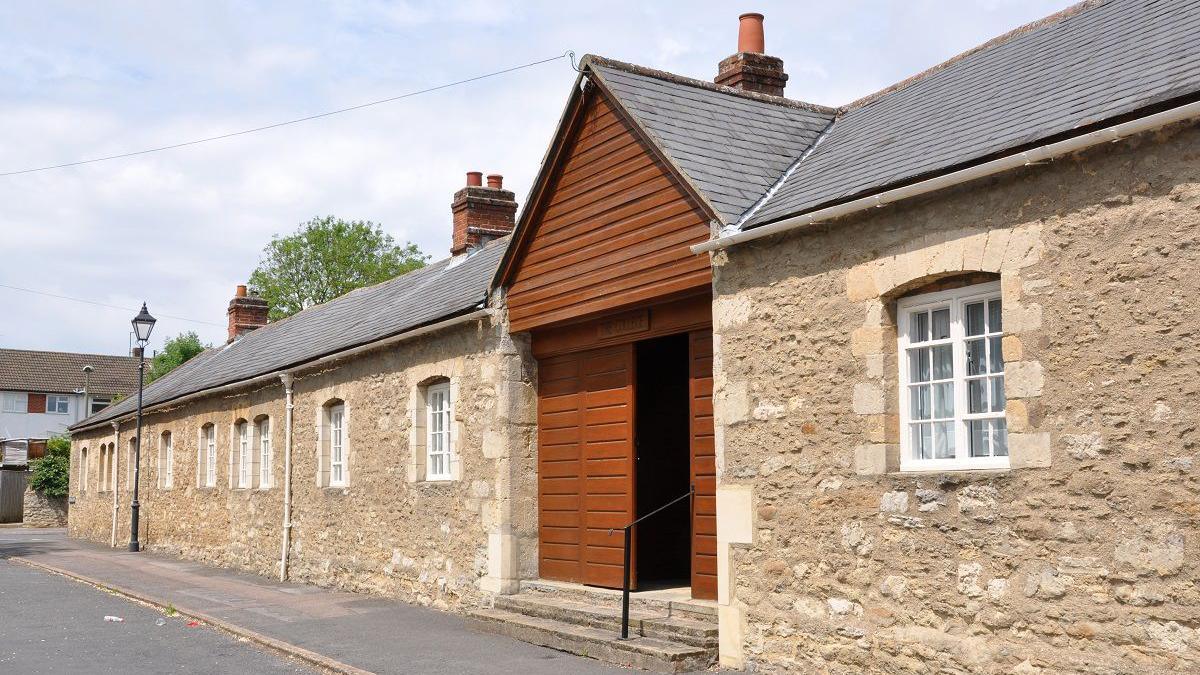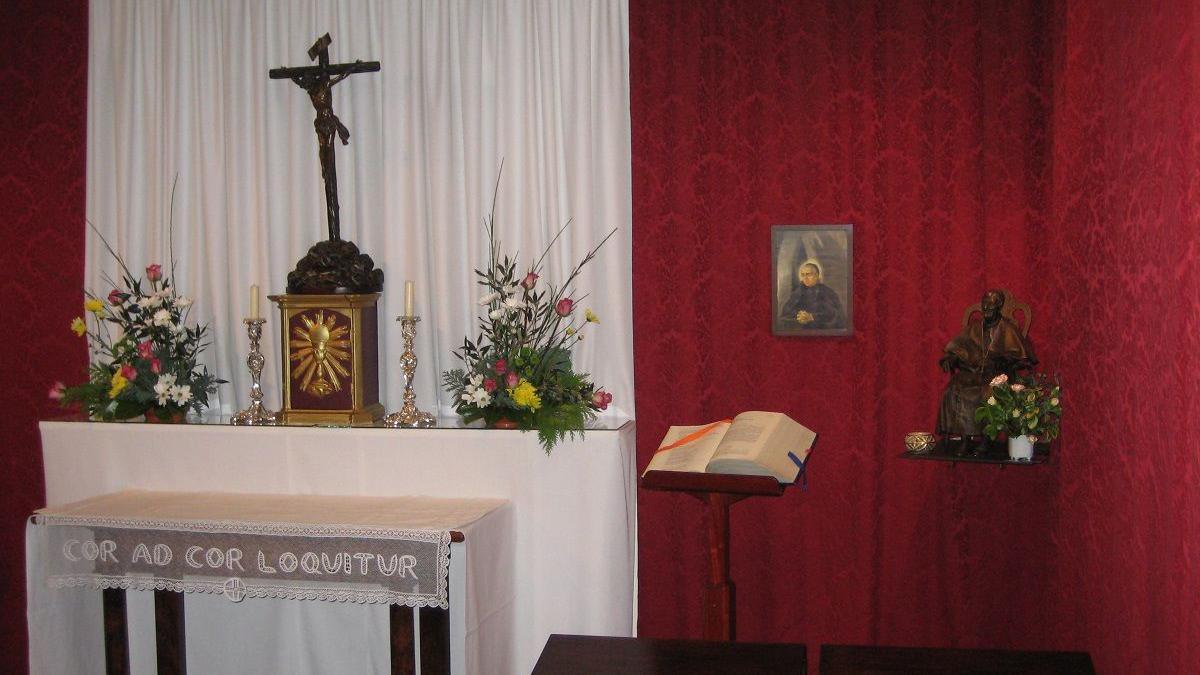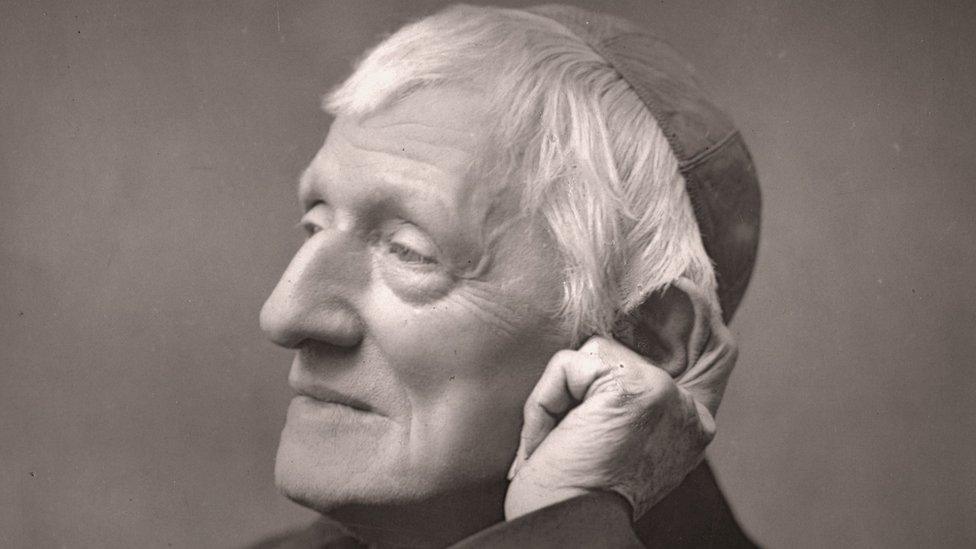English saint to get doctor designation from Pope

John Henry Newman will become only the second British Doctor of the Church
- Published
The first Englishman to be made a saint in the Catholic Church for hundreds of years will soon be recognised with an even more prestigious title.
John Henry Newman was first made a cardinal in 1879 by Pope Leo XIII, a position he held for 11 years before his death.
Almost 150 years later, current pontiff Pope Leo XIV announced last week that Newman would be recognised as a Doctor of the Church.
In doing so, the Pope made Newman the 38th person and first Briton born in the past 1,000 years to be given the title.
Newman studied at Trinity College, Oxford, before becoming an Anglican priest in the city.
It was during his time among the dreaming spires that he founded the Oxford Movement, which argued for the reinstatement of some older Christian traditions into the Victorian Church of England.

The College, in Littlemore, has remained largely untouched since Newman lived there in the 1840s
He lived at The College, in Littlemore, during the 1840s, which is where he controversially converted to Roman Catholicism in 1845.
The College still stands as a symbol of Newman's theology and is maintained by a group of devoted nuns, with much of it remaining untouched since the early Victorian era.
Sister Mary-Birgit Dechant said Newman's "religious impact and his contribution to education" were "formed and shaped in Oxford".
She said: "St John Henry left a tremendous legacy in theology, philosophy, spirituality, pastoral care, education and, not to forget, poetry.
"His works are much read and researched, which proves that he is speaking to people of our time."

It was in this chapel in Oxford that Newman converted to Roman Catholicism
Newman was canonised by Pope Francis in 2019, after the Vatican attributed two miracles to the former cardinal.
In doing so, the then pontiff made Newman the first English saint since the Forty Martyrs, who had been executed under Reformation laws during the 16th and 17th Centuries.
Just six years later, Pope Francis' successor Leo XIV has recognised Newman with an even greater honour, making him a Doctor of the Church.
The title recognises saints who "made an outstanding or eminent contribution to our knowledge of the faith," according to the Catholic Church of England and Wales.
The Archbishop of Westminster, Vincent Nichols, who leads the church in England and Wales, said that he was "delighted and thrilled" by the Pope's declaration.
"This recognition that the writings of St John Henry Newman are a true expression of the faith of the Church is of huge encouragement to all who appreciate not only his great learning but also his heroic sanctity in following the call of God in his journey of faith, which he described as 'heart speaking unto heart'," he said.

Newman was canonised by Pope Francis in 2019
Sister Mary-Birgit added that Newman's appointment as a Doctor of the Church had "confirmed and encouraged" her sisterhood's mission at Littlemore.
She said: "We have seen a growing interest in Newman and we can testify that his life and words are a great help for people worldwide.
"As Newman, we desire that people grow in faith and trust that by his elevation as Doctor of the Church his influence will increase even more.
"Oxfordians can be proud of his legacy."
The Vatican has not yet announced when the official ceremony will take place.
Get in touch
Do you have a story BBC Oxfordshire should cover?
You can follow BBC Oxfordshire on Facebook, external, X (Twitter), external, or Instagram, external.
- Published13 October 2019

- Published13 February 2019
